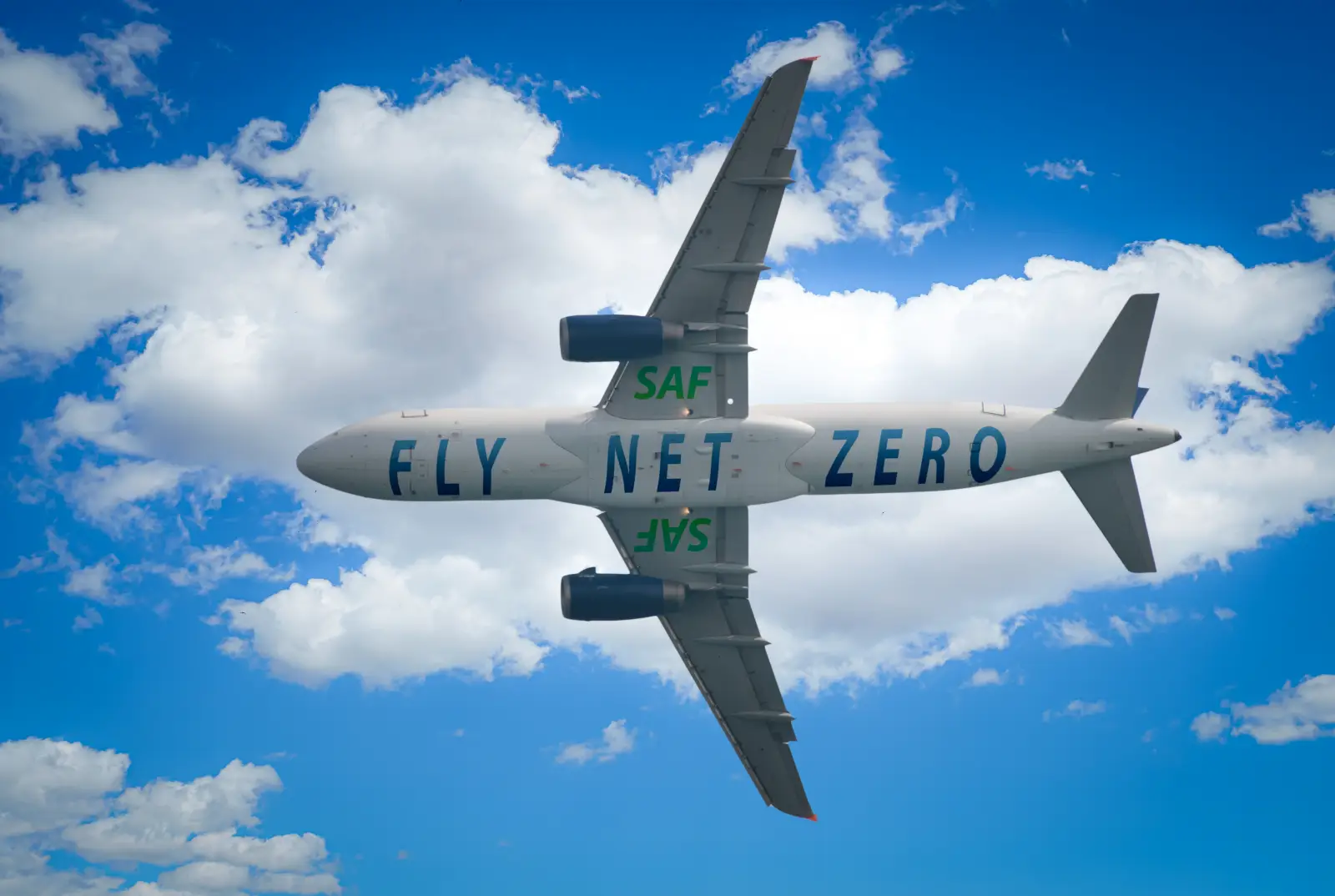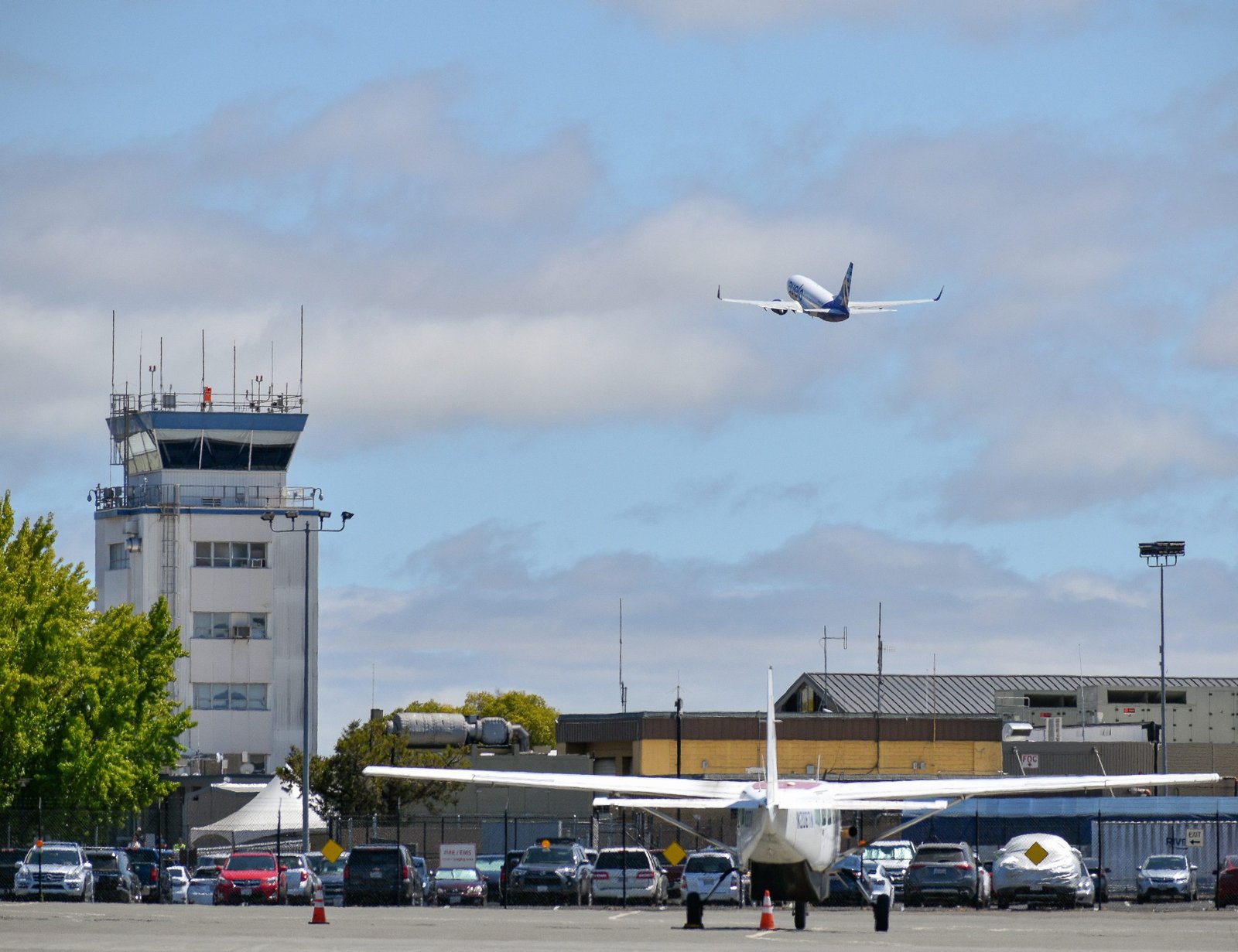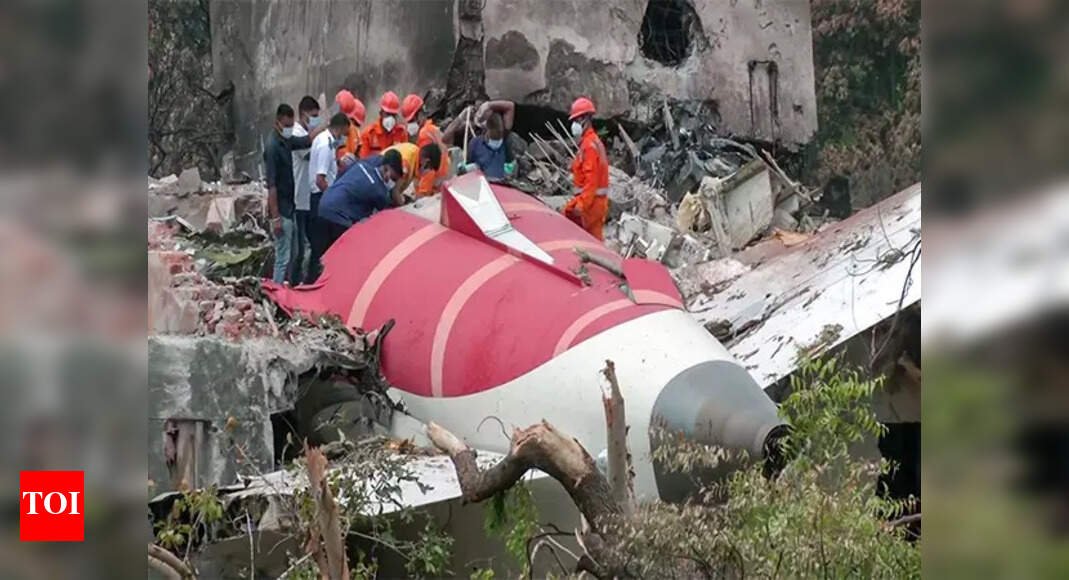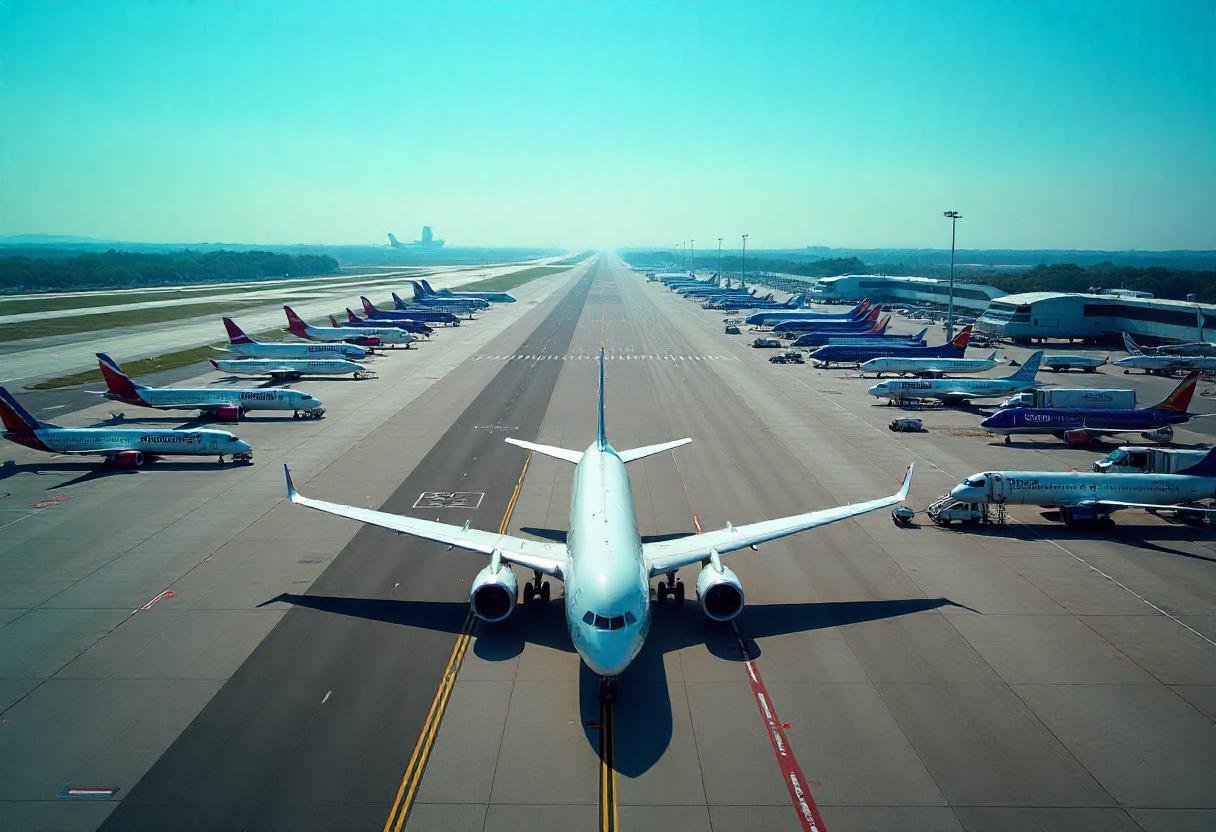Flight Buzz
IATA Chief talks about tariff uncertainties, EU’s sustainable aviation fuel and low cost carrier model

The director-general of the International Air Transport Association (IATA), Willie Walsh, was in Singapore recently where he talked about strategic and significant issues facing the aviation industry. These include the uncertainties surrounding the impending U.S tariffs and the viability of low cost carrier models upon the exit of Qantas’ owned Jetstar. He also heavily criticised the EU’s sustainable aviation fuel (SAF).
U.S. tariffs may cause airlines to refuse delivery of aircraft
Airlines may be reluctant to take delivery of aircraft due to the ongoing uncertainty around U.S. tariffs and their impact on the cost of the planes, Walsh said, as reported by Reuters.
“It’s not just going to be a major Boeing and Airbus issue. It’ll impact all aspects of the aerospace industry and have an impact on most, if not all, airlines as well,” he said.
The 50% tariff that U.S. President Donald Trump plans to impose on Brazilian exports starting in August could hammer the revenue of planemaker Embraer like the COVID-19 pandemic did, its CEO Francisco Gomes Neto, warned last week, flagging risks to U.S. partners.
Neto said the tariffs would amount to a trade embargo on the regional jets it supplies to U.S. airlines and could trigger order cancellations, deferred deliveries and tough consequences for Embraer’s U.S. suppliers.
EU’s green fuel mandate costly, not helping environment
IATA also stepped up criticism of the European Union’s sustainable aviation fuel (SAF) mandate as a costly initiative that is not helping the environment as regional supplies there remain low.
“The idea that you’re buying sustainable fuel and then transporting it to use in Europe isn’t the right way to do it, because you’re clearly increasing the carbon footprint of that fuel as a result of the transportation costs,” Walsh said.
IATA estimated in June that production of SAF, which is considered a low carbon replacement for traditional jet fuel is expected to reach two million tonnes, or 0.7 per cent of airlines’ fuel consumption, in 2025.
“Mandating the use of a product that isn’t available doesn’t lead to any environmental benefit,” Walsh said, adding that fuel companies that have an obligation to produce SAF are also increasing the cost of traditional jet fuel.
By IATA’s assessment, he said “the cost that they’re charging is way in excess of the actual cost of the limited supplies of sustainable fuel”.
“The EU in effect has facilitated monopoly suppliers to increase prices with no environmental benefit,” said Walsh, adding that the region needs to re-evaluate its SAF targets.
Under the ReFuelEU Aviation requirement, airlines need to have a six per cent SAF blend in their jet fuel usage by 2030. The EU is offering some subsidies for SAF purchases by airlines, Reuters reported in June.
On the supply front, at least five SAF projects in Asia, outside of China, have started up or are earmarked to start production in 2025, targeting exports regionally and to Europe. Singapore is among key exporters of the green fuel to the EU.
Walsh also questioned the use of palm oil as a means to produce sustainable fuel.
“I think that you could argue there is sustainable palm oil and there is palm oil that wouldn’t be considered sustainable, and I think in some parts of the world there it’s too black and white,” Walsh said.
We need to have a much more “nuanced approach” to the usage of palm oil as a feedstock and “much more detailed assessment of the sustainability of the feedstock”, he added.
Low-cost carrier model remains viable, but may not work at every airport
The budget airline model is not dead, but it does not always work at every airport, said Walsh. He added that it probably does not make sense for budget carriers to operate at certain airports because of their nature or cost structure.
“Just because you see some low-cost airlines exiting the market, I don’t think you can read across that the business model is not relevant for the future,” he said. “I firmly believe it is and will continue to be. But it doesn’t always work at every airport. Airlines that are labelled budget or low-cost, that doesn’t necessarily guarantee their financial success.”
The viability of budget airlines at high-cost airports such as Changi Airport was thrust into the spotlight after Jetstar Asia said it was exiting Singapore at the end of July, flagging increased competition and operating costs as some push factors.
“Heathrow Airport is no different. For example, there’s no real low-cost operation at Heathrow, principally because of the cost of the airport and the access to slots.”
The airline industry is a highly competitive one, Walsh added. He pointed out that, although 408 new airlines were started in the past decade to December 2024, there were 420 failures as well, making a net loss of 12. Profitability on a global level is wafer-thin – the net profit margin this year is forecast at 3.7 per cent.
Photo Credit: Ivan Marc / Shutterstock.com
Flight Buzz
Turbulent times for Avelo Airlines result in its departure from Sonoma’s regional airport

SONOMA COUNTY’S REGIONAL AIRPORT will see the departure of Avelo Airlines, which announced it faces operational headwinds, but the airport’s leadership remains optimistic in their ability to continue growing for local travelers.
Passengers transiting through Charles M. Schultz-Sonoma County Airport will have fewer options after Avelo Airlines announced it will suspend all service to the airport on Aug. 11, leaving the airport with two commercial airlines, Alaska Airlines and American Airlines.
In its Monday announcement, Avelo mentioned it would be shutting down its base operations at Hollywood Burbank Airport, effectively closing all its operations on the West Coast of the U.S.
“We believe the continuation service from BUR in the current operating environment will not deliver adequate financial returns in a highly competitive backdrop,” said Avelo communications manager Courtney Goff in a press release. “Despite the investment of significant time, resources and efforts, our West Coast operations have not produced the results necessary to continue our presence there.”
Avelo Airlines quickly became the airport’s second largest operator, after Alaska, with about 24% of the share of the total number of passengers traveling to Santa Rosa as of April of this year. It began service in 2021, advertising itself to locals as a better and cheaper alternative to those looking to avoid headaches associated with traveling to the Bay Area’s larger international airports.
As of recently, its website touts its operations in Santa Rosa as “a hassle-free and convenient travel experience.”
The news of the airline’s departure slightly surprised airport manager Jon Stout but did not shock him. He had already seen Avelo significantly scale back its operations at the airport on May 1 when the airline removed aircraft and crews from Santa Rosa, so a decision to pull out altogether was not out of the blue. However, according to Stout, the airline’s decision to suspend service came swiftly.
“We got a call Monday morning saying this is what they are doing. They then reached out to reporters later Monday morning, so not a lot of advanced warning,” said Stout.
Financial data from the federal Department of Transportation’s Bureau of Transportation Statistics show Avelo reported a net loss of $17 million in the first quarter of 2025, its highest loss in a quarter.
Stout said the economic impact to the airport of the airline’s departure will remain relatively small. He said the airport has a diverse revenue base with income coming from parking, businesses, and the other airlines that offer more frequent service.
Stout also adds that the airport’s other airline partners plan on increasing service throughout the year, effectively counteracting the loss in number of flights to Santa Rosa.
About 20 employees continue to work for Avelo at the airport as either check-in or ramp agents. Staff were instructed to direct all questions to the communications department, but Stout revealed Avelo employees were offered to transfer to different sites while some airport partners offered to hire some laid-off individuals.
Left: An Avelo Airlines Boeing 737-7H4 (N181SY) lands at Charles M. Schulz–Sonoma County Airport in Santa Rosa, Calif., after completing a flight from Kalispell, Mont., on Wednesday, July 16, 2025. Right: An Alaska Skywest Embraer E175LR (N181SY) parks at Charles M. Schulz–Sonoma County Airport in Santa Rosa, Calif., after completing a flight from Santa Ana, Calif., on Wednesday, July 16, 2025. (Andres Jimenez Larios/Bay City News)
“[The airline has] been offering them opportunities to go to the East Coast at some of their other airport operations and hubs,” said Stout.
Besides financial headwinds, Avelo has also come under fire from immigrant rights groups across the country after contracting with the U.S. Department of Homeland Security and Immigration and Customs Enforcement to deport migrants from Mesa, Arizona.
Local groups like Indivisible Sonoma County have previously protested at the airport as well as other groups across the country displeased with the company’s deportation flights.
Residents employed with Avelo are not the only ones disappointed to see the airline leave. Travelers like Dana Johnson from Santa Barbara said he did not know the airline was going to suspend services, until passengers on his flight from Kalispell, Montana brought up the subject.
“I woke up at the end of the flight and there was somebody who was like, ‘Oh, I’m not gonna be able to do this.’ So many people on the plane were talking about it and upset,” said Johnson. “This flight’s pretty much full. Just raise prices if you needed to be here.”
According to Avelo, travelers who have trips booked past Aug. 11 should check their reservation online to receive a refund.
Flight Buzz
AI 171 crash: Aviation minister rebuts foreign media claims | India News

NEW DELHI: Union aviation minister Ram Mohan Naidu Sunday urged western media to avoid speculation and appreciated AAIB for decoding black box data in India.“AAIB has made an appeal to all, especially western media houses, which may have a vested interest in the kind of articles they are trying to publish. I believe in AAIB. I believe in the work that they are doing. They have done a wonderful job in decoding the whole black box and getting the data out in India itself,” he said. He reiterated govt will await the final report before drawing any conclusions.Govt has been firefighting over the Aircraft Accident Investigation Bureau’s (AAIB) slammed-by-most preliminary probe into the deadly June 12 Air India AI 171 crash. While the report did not reveal cockpit voice recorder (CVR) transcript of the critical seconds, the western media started giving out those alleged details regularly a full 44 hours before the AAIB report was released on July 12 — which are yet to be denied by AAIB. The western reports have blamed AI 171 captain for the crash. The solitary selective indirect CVR quote in AAIB report also has one pilot asking the other why he switched off the fuel supply to engines.Naidu termed this decoding a major achievement as earlier black boxes had to be sent abroad to retrieve data. “But this is the first time that successfully AAIB has decoded everything. The preliminary report has also been seen,” he said and urged against coming to conclusions before the final report is out.
Flight Buzz
American Airlines Reduces Daily Flight Frequency on Key New York-London JFK to Heathrow Route for Winter 2025-2026 Season: You Need to Know

Monday, July 21, 2025
American Airlines has cut daily flight frequencies on its critical New York to London JFK to Heathrow route for the winter of 2025-2026. The strategic move reflects the airline’s efforts to adapt its operations to changing industry and demand dynamics. For November 2025 through March 2026, American Airlines plans to pare its schedule to three flights per day — previously four — to accommodate travel patterns and market conditions. The move forms part of a continual review of the airline’s long haul network to ensure its facing customer requirements, while maintaining a presence on the high traffic transatlantic corridor.
Adjustments to the Winter Schedule
This decision, backed by aviation data from Cirium, marks a shift in American Airlines’ operations on the JFK-LHR route. While four daily flights have been standard during the summer months, the airline will scale down during the winter, following a temporary reduction of one flight in May 2025. Despite this change, Heathrow will remain American Airlines’ sole direct destination in London from JFK, though the airline still offers connections to other London airports through its network of codeshare agreements.
American Airlines has been operating the JFK-LHR route for years, using its fleet of Boeing 777 aircraft, known for their luxurious, premium-heavy cabins that cater to long-haul passengers seeking comfort and convenience.
Aircraft Configuration and Seating
American Airlines’ Boeing 777-200ER is configured with 273 seats in a four-class layout: 37 business class, 24 premium economy, 66 economy plus, and 146 standard economy. Meanwhile, its Boeing 777-300ER has a larger capacity, seating up to 304 passengers across five classes, including 8 in first class, 52 in business class, 28 in premium economy, 28 in economy plus, and 188 in economy class. These configurations are designed to provide a comfortable and efficient long-haul experience for both premium and economy travelers on this competitive transatlantic route.
Strong Competition on the JFK-LHR Route
The route between JFK and LHR is one of the most important and lucrative international corridors, with high demand and limited slots at both airports. As a result, American Airlines faces fierce competition from other major carriers including British Airways, Delta Air Lines, JetBlue Airways, and Virgin Atlantic, all of which operate direct flights between the two airports.
British Airways, which dominates the JFK-LHR route, operates eight daily flights. While American Airlines reduces its daily frequency to three flights in the winter, British Airways will maintain its full schedule. Through their codeshare partnership, the two airlines will offer a total of 11 daily flights between JFK and LHR throughout the winter months, further solidifying their shared dominance on this high-traffic route.
Airlines Operating the JFK-LHR Route (Nov 2025 – Mar 2026)
| Airline | Daily Flights |
|---|---|
| American Airlines | 3x daily |
| British Airways | 8x daily |
| Delta Air Lines | 2x daily |
| JetBlue Airways | 2x daily |
| Virgin Atlantic | 4x daily |
JetBlue and Delta will continue operating their twice-daily services, with JetBlue flying the Airbus A321LR and Delta deploying a mix of Airbus A330neo and Boeing 767-400 aircraft. Virgin Atlantic, on the other hand, will continue its four daily flights using the Boeing 787-9 Dreamliner. The stiff competition reflects the ongoing strong demand for travel between New York and London.
Enhanced Premium Offerings to London
As part of its strategy to cater to the growing demand for premium travel, American Airlines is increasing its premium seating options on flights to London. The airline has introduced newly configured Boeing 787-9 Dreamliners equipped with Flagship Suite business class seats, which will be deployed more frequently to Heathrow. These aircraft will also serve additional routes from Chicago O’Hare (ORD), Philadelphia (PHL), and Dallas/Fort Worth (DFW) to London.
These Boeing 787-9 aircraft are configured with a premium-heavy cabin that includes 51 Flagship business class suites, 32 premium economy seats, and 161 economy seats. This setup is designed to meet the high demand for business and premium services on long-haul flights to one of the world’s busiest business travel destinations.
Additionally, American Airlines has received approval from the U.S. Federal Aviation Administration (FAA) to operate its premium-heavy Boeing 787-9 aircraft with one less cabin crew member. This adjustment allows the airline to staff these aircraft with seven crew members instead of the usual eight, helping to streamline operations while maintaining service quality on its premium flights.
Conclusion
The move by American Airlines to lower the number of flights on its JFK-LHR route for winter 2025-2026 is part of the carrier’s continual efforts to be more in tune with market demand and to stay competitive on the strategically important transatlantic sector. And yes, there will be less frequency, but American will still offer a premium experience, with premium seating on its newly reconfigured aircraft. The interline agreement with British Airways means that customers will continue to have a wide range of choice of flights, competition and service to support one of the world’s most popular travel destinations.
-

 Mergers & Acquisitions1 week ago
Mergers & Acquisitions1 week agoAmazon weighs further investment in Anthropic to deepen AI alliance
-

 Mergers & Acquisitions1 week ago
Mergers & Acquisitions1 week agoHow Elon Musk’s rogue Grok chatbot became a cautionary AI tale
-

 Asia Travel Pulse2 weeks ago
Asia Travel Pulse2 weeks agoLooking For Adventure In Asia? Here Are 7 Epic Destinations You Need To Experience At Least Once – Zee News
-

 Brand Stories2 weeks ago
Brand Stories2 weeks agoVoice AI Startup ElevenLabs Plans to Add Hubs Around the World
-

 Mergers & Acquisitions1 week ago
Mergers & Acquisitions1 week agoUK crime agency arrests 4 people over cyber attacks on retailers
-

 AI in Travel2 weeks ago
AI in Travel2 weeks ago‘Will AI take my job?’ A trip to a Beijing fortune-telling bar to see what lies ahead | China
-

 Mergers & Acquisitions1 week ago
Mergers & Acquisitions1 week agoEU pushes ahead with AI code of practice
-

 Mergers & Acquisitions2 weeks ago
Mergers & Acquisitions2 weeks agoChatGPT — the last of the great romantics
-

 The Travel Revolution of Our Era1 month ago
The Travel Revolution of Our Era1 month agoCheQin.ai Redefines Hotel Booking with Zero-Commission Model
-

 Mergers & Acquisitions1 week ago
Mergers & Acquisitions1 week agoHumans must remain at the heart of the AI story

You must be logged in to post a comment Login